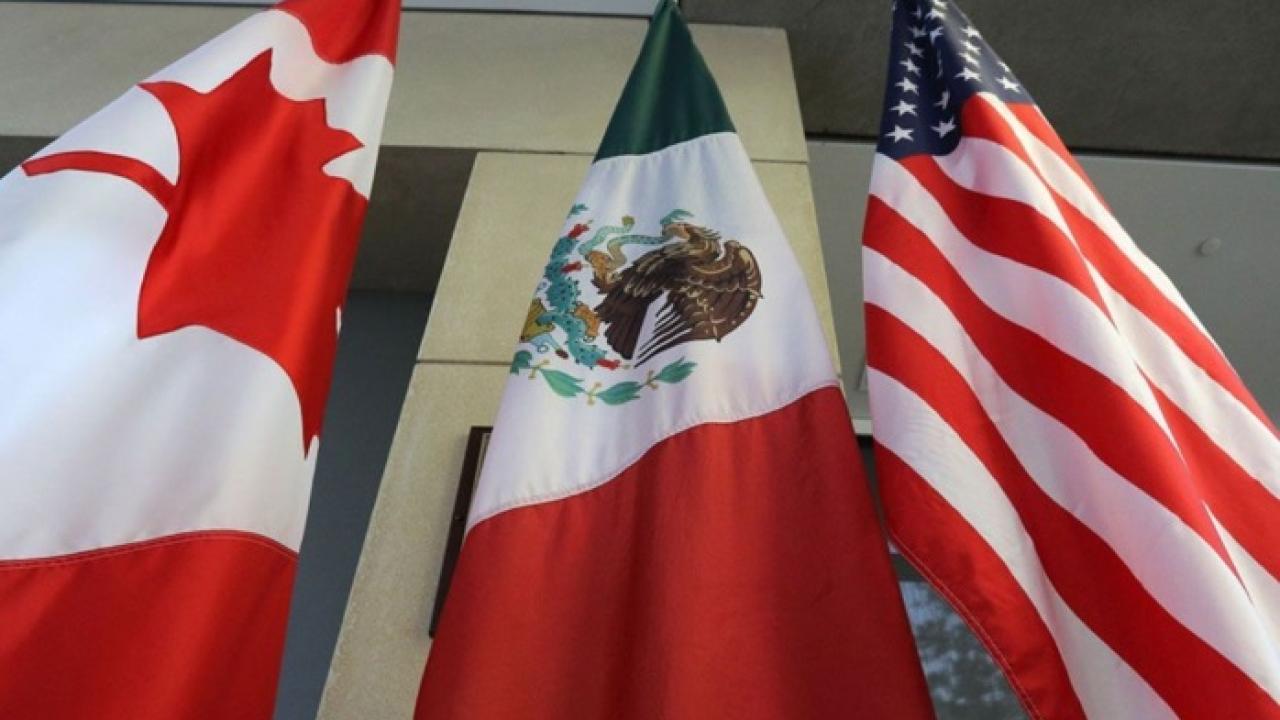
The treaty will be maintained because it has been confirmed as a strength for the United States to compete with the Asian power, but it could become more restrictive in terms of rules of origin to strengthen regional integration, experts say.
The China factor has emerged as the central issue regarding the direction of the Treaty between Mexico, the United States and Canada (T-MEC), when this Monday marks four years since its entry into force and with a view to its review scheduled for 2026, according to international trade analysts.
When the North American Free Trade Agreement (NAFTA, predecessor of the T-MEC) was renegotiated, it was already known that the United States required Mexico to compete against China, but now this is felt more widely in the societies of the three countries in the region and among politicians.
“The United States is a very polarized society, there is no consensus, except on China, and Mexico is a key player in the United States' competition with China,” commented Luis de la Calle, general director of the consulting firm De la Calle, Madrazo, Mancera. (CMM).
Article 34.7 of the T-MEC establishes that the agreement will end 16 years after its entry into force, “unless each party confirms that it wishes to continue this Agreement for a new period of 16 years,” in accordance with the procedures of the T-MEC. MEC.
These procedures establish that, in July 2026, on its sixth anniversary, the USMCA Free Trade Commission will meet to review the agreement and the recommendations presented by the three member countries, and decide on appropriate actions.
It seems very difficult for the United States to get out of an agreement where it is its number one client, its number two client and its main instrument to compete against its main competitor: China,” De la Calle added. “Yes you can, but it is difficult.”
Alejandro Rodríguez, an analyst at the American consultancy Plante Moran, agrees with this, highlighting the growing integration of North America, with Mexico positioned as the United States' first trading partner from 2023 until now.
“Very apart from this, it will be important to monitor what is going to happen, since the issue of China is going to be central in the review of the T-MEC,” he said.
Rules of origin, debate
Rodríguez stated that it is not yet known whether the United States will want to limit the Chinese content in Mexico's exports to the US market, tightening the treaty's rules of origin in a general way, applicable to any nation outside of North America.
New provisions on more restrictive rules of origin in the motor vehicle sector may again be of interest to the United States, as was the case in the renegotiation of NAFTA.
The T-MEC's automotive sector rules of origin are probably the strictest of any US free trade agreement and the only ones that have a wage requirement.
But an analysis by the US Congress warns that the cost of compliance may have unintended consequences if manufacturers find it more beneficial to pay tariffs rather than the additional cost of complying with the new rules.
If manufacturers decide to pay tariffs rather than adhere to regional value content requirements, it could result in less North American content and more content from third countries, including China, in U.S. auto production.
Policymakers will be able to monitor the full effects of these new rules as they are fully implemented. According to a July 2023 report from the U.S. International Trade Commission, the full effect of the rules of origin will likely not be evident until the agreement is fully implemented in 2027 or later.
Chinese sovereignty and investments
Regarding potential Chinese investments in Mexico, Rodríguez considered that it is more complicated to limit them, because they already touch on issues of national sovereignty. On the contrary, a general tariff can be imposed, as proposed by Donald Trump, former president and now presidential candidate of the United States, although this action has controversial regulatory aspects and economic impact.
Rodríguez explained that the review will be critical and will demonstrate why the United States put it on the table, because the scenario in North America and the world is now very different from when the T-MEC was approved.
“I think it is proving that, in reality, it was important to raise the issue of a review every certain period, to be able to ensure that the agreement remains in force,” he said.
Rodríguez said that Mexico will have control in its hands and that the future of this country lies more in internal aspects, such as increasing infrastructure and creating an environment to attract investment, than what could happen with the T-MEC.
In the production of cars, the T-MEC raises the Regional Content Value (RCV) from 62.5% of the NAFTA to 75%, and also sets salary requirements that stipulate that between 40 and 45% of the content be made by workers who earn at least 16 dollars an hour.
What's coming for the T-MEC?
In the Final Provisions chapter of the T-MEC, the parties undertake to review the agreement on the sixth anniversary of its entry into force.
If in said review it is decided not to renew an extension, the T-MEC would remain in force for another 10 years.
But if they decide to renew it, the validity will be extended for another six additional years, for a total of 16 years.
If one of the parties does not confirm its wish to extend the validity of the agreement for another period of 16 years, the parties will carry out a joint review of the agreement each year.
The agreement only specifies that one “party” will review the agreement; It does not say whether it will be the President or the United States Congress who will review it.










